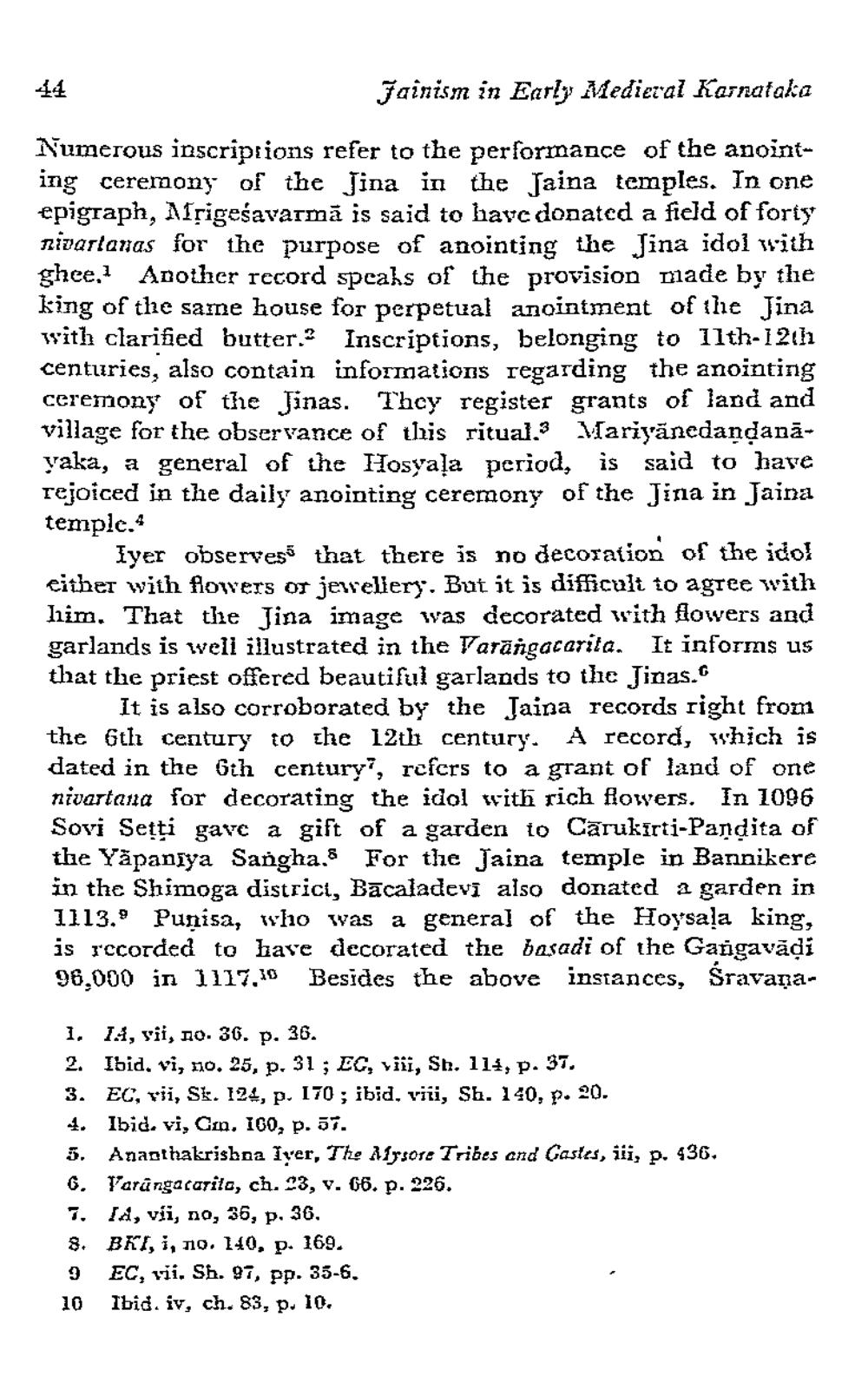________________
44
Jainism in Early Medieval Karnataka
Numerous inscriprions refer to the performance of the anointing ceremony of the Jina in the Jaina temples. In one epigraph, AIrigeśavarmā is said to have donated a field of forty nivarlanas for the purpose of anointing the Jina idol with ghee, Another record speaks of the provision made by the king of the same house for perpetual anointment of the Jina with clarified butter.” Inscriptions, belonging to Ilth-12th centuries, also contain informations regarding the anointing ceremony of the Jinas. They register grants of land and village for the observance of this ritual.3 Mariyāncdandanayaka, a general of the Hosyaļa period, is said to have rejoiced in the daily anointing ceremony of the Jina in Jaina temple.4
Iyer observes that there is no decoration of the idol either with flowers of jewellery. But it is difficult to agree with lim. That the Jina image was decorated with flowers and garlands is well illustrated in the Varängacarila. It informs us that the priest offered beautiful garlands to thc Jinas.
It is also corroborated by the Jaina records right from the Gth century to the 12th century. A record, which is dated in the 6th century, refers to a grant of land of one nivartana for decorating the idol with rich flowers. In 1096 Sovi Sexţi gave a gift of a garden io Carukirti-Pandita of the Yăpaniya Sangha.: For the Jaina temple in Bannikere in the Shimoga district, Bacaladevī also donated a garden in 1113.9 Punisa, who was a general of the Hoysala king, is recorded to have decorated the basadi of the Gangavāời 96,000 in 1117,16 Besides the above instances, Sravana
1. 14, vii, no. 36. p. 36. 2. Ibid. vi, no. 25, p. 31 ; EC, viii, Sh. 114, p. 37. 3. EC, vii, Sk. 124, p. 170; ibid, viii, Sh. 140, p. 20. 4. Ibid. vi, Gm. 100, p. 57. 5. Ananthakrishna Iyer, The Alysore Tribes and Gastes, iii, p. 436. 6. Parângacarito, ch.23, v. 66. p. 226. 7. A, vii, no, 36, P, 36, 8. BKI, i, no. 140, p. 169. 9 EC, vii. Sh. 97, pp. 33-6. 10 Ibid. iv, ch. 83, p. 10.




